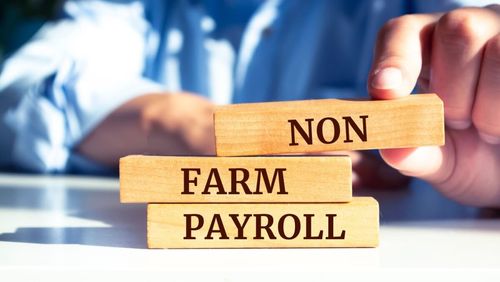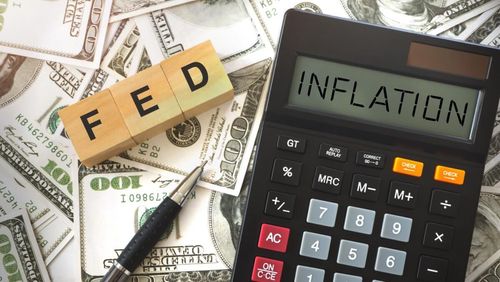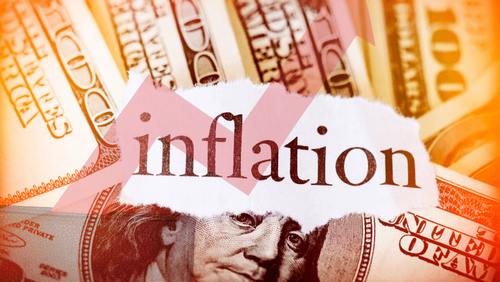US nonfarm payrolls dominate the data calendar this week. The key jobs market metric is usually a massive market mover, so a lot of attention will be on the state of the nation’s labour market when the latest reading is printed on Friday.
OPEC-JMMC monthly meetings kick off mid-week as oil markets strengthen globally. The Reserve Bank of Australia also shares its latest cash rate decision –likely a copy-paste of May’s non-mover.
Starting with the US, the country will be hoping some of March’s job market fervour shows up in May’s reading following April’s bust. Last month’s NFP saw roughly a quarter of expected new jobs created, falling far below estimates.
April’s numbers clocked in at 266,000 jobs created. Estimates were hoping for over a million, buoyed by the rapid economic growth and March’s NFP coming in at 916,000.
As of the end of April, 9.8 million Americans were still unemployed. What’s interesting is that job openings at the end of March totalled 8.1 million, substantially narrowing the wedge. Labour demand and labour supply are realigning but aren’t quite level yet, causing some friction.
There are still concerns amongst the general population about contracting the virus, despite 50% of eligible recipients getting vaccines. Two-thirds of school age children have not returned to the classroom. Some may not be willing to give up their unemployment benefits just yet either.
The jobs report will be closely watched by the market as a guide on how soon the Federal Reserve may be expected to start removing accommodation. The Fed has tied its colours to the employment mast and the slower the gains in employment, the easier Fed policy will remain. Inflation complicates the picture but thus far markets believe the Fed when it says it will look through ‘transitory’ price pressures.
OPEC-JMMC meetings are slated for June 1st. The cartel’s 2021 mission has been to protect oil markets and strengthen prices. Production cuts have been the key here. Full pre-pandemic output volumes are yet to be re-established. Despite global economies reopening, and oil demand rising, OPEC and allies are still feeling cautious.
Even so, more crude is coming from OPEC members. They have been gradually tapering output curbs for the past couple of months. June’s meeting will be cementing plans for July and August, i.e. whether to ramp up the taper or keep it in line with the cartel’s original plan.
At the April 1st meeting, OPEC-JMMC agreed to bring 2.1m barrels per day (bpd), back to markets between May-July. Cuts will be eased back to 5.6m bpd.
OPEC is banking on higher oil demand this year. Its recovery outlook suggests daily demand will reach 6m bpd by the end of 2021 – a major rise against 2020’s levels, but still some 3.5bpd less than pre-pandemic levels.
While vaccine rollout has been successful in key importing countries, there are still concerns. Rising coronavirus cases in India, the world’s third-largest oil importer, has weighed heavily on OPEC. There is still lots of ground to cover before global oil markets resemble anything like their pre-Covid 19 selves.
Attention will also be on the Reserve Bank of Australia – the next central bank to fill us in on any upcoming tweaks to Australia’s financial policy.
A cash rate decision is due. Chances are nothing momentous is coming. Australia’s cash rate has remained at 0.10% since November 2020. Governor Dr Philip Lowe has indicated it’s probably not going to rise in 2021. Based on previous statements, we won’t see an Australian cash rate hike until 2024 at the earliest.
Dr Lowe states inflation targets and a lower unemployment rate are the key metrics the RBA is using as cash rate hike triggers. The RBA expects inflation to be 1.5% in 2021, it said in its May statement, and 2% in mid-2023. Before it raises rates, the Bank has repeatedly said it wants inflation to be ‘comfortably’ within the 2-3% range.
In terms of labour markets, the RBA expects unemployment rates to reach 4.8% by year-end 2021 before dropping slightly to 4.4% in 2022.
Major economic data
| Date |
Time (GMT+1 |
Asset |
Event |
| Mon 31-May |
2.00am |
CNH |
Manufacturing PMI |
| |
|
|
|
| Tue 01-Jun |
All Day |
Oil |
OPEC-JMMC Meeting |
| |
5.30am |
AUD |
Cash Rate |
| |
5.30am |
AUD |
RBA Rate Statement |
| |
1.30am |
CAD |
GDP m/m |
| |
3.00pm |
USD |
ISM Manufacturing PMI |
| |
|
|
|
| Wed 02-Jun |
2.30am |
AUD |
GDP q/q |
| |
|
|
|
| Thu 03-Jun |
2.30am |
AUD |
GDP m/m |
| |
3.00pm |
USD |
ISM Services PMI |
| |
3.30pm |
Nat gas |
US Natural Gas Inventories |
| |
4.00pm |
Oil |
US Crude Oil Inventories |
| |
|
|
|
| Fri 04-Jun |
1.30pm |
CAD |
Employment Change |
| |
1.30pm |
CAD |
Unemployment Rate |
| |
1.30pm |
USD |
Average Hourly Earnings m/m |
| |
1.30pm |
USD/Indices/Gold |
Non-farm Employment Change |
| |
1.30pm |
USD |
Unemployment Rate |
Key earnings data
| Date |
Company |
Event |
| Tue 01-Jun |
Zoom |
Q1 2022 Earnings |
| |
Scotiabank |
Q2 2021 Earnings |
| |
Hewlett Packard |
Q2 2021 Earnings |
| |
|
|
| Wed 02-Jun |
Splunk |
Q1 2022 Earnings |
| |
|
|
| Thu 03-Jun |
Broadcom |
Q2 2021 Earnings |
| |
Slack |
Q1 2022 Earnings |








